Model Course
朝の奈良ウォーク 神秘な朝の奈良公園早回りコース
ひんやりした空気がすがすがすがしい早朝。朝もや包まれた神秘的な光景に、また違った奈良公園の魅力を発見できることでしょう。
| Areas |
toudaiji |
|---|
Model Course
Nara City Tourist Information Center
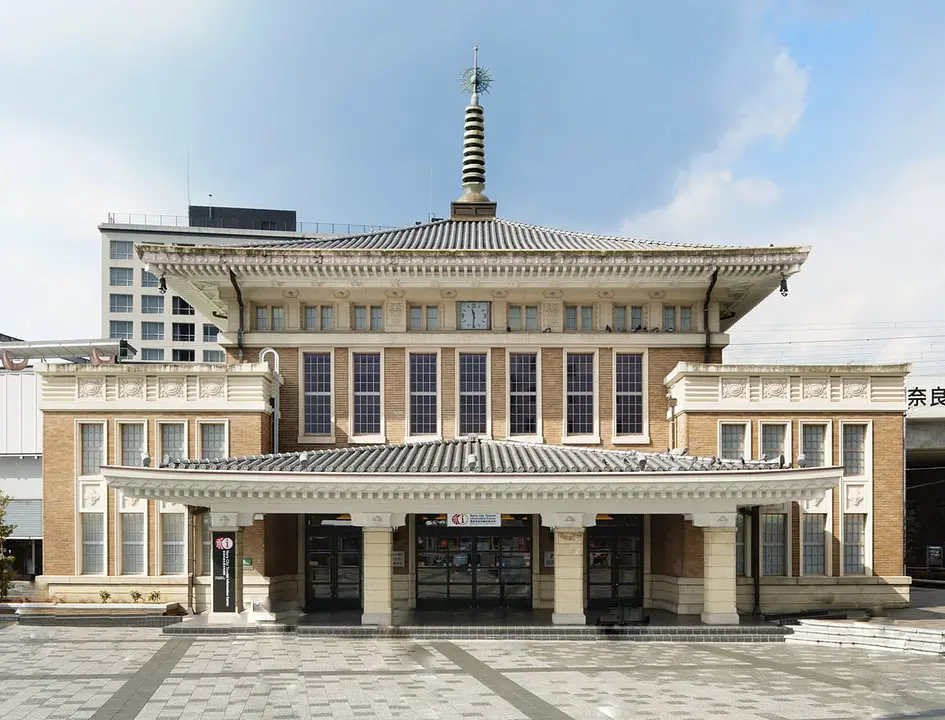
Nara City Tourist Information Center
The former station building of JR Nara Station opened on July 25, 2009 as the Nara City General Tourist Information Center. There is also tourist information in foreign languages and a tourist information search corner connected to the internet.
Kohfukuji Temple - Nanendo Hall
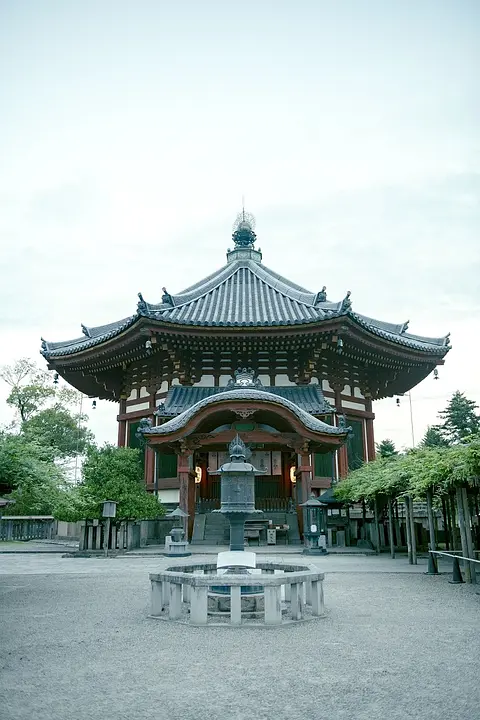
Kohfukuji Temple - Nanendo Hall
It is the largest octagon-shaped pagoda in Japan, and was originally built in 813. Having experienced several disasters, the present pagoda was rebuilt after it suffered a fourth catastrophe.
Kasugataisha Shrine
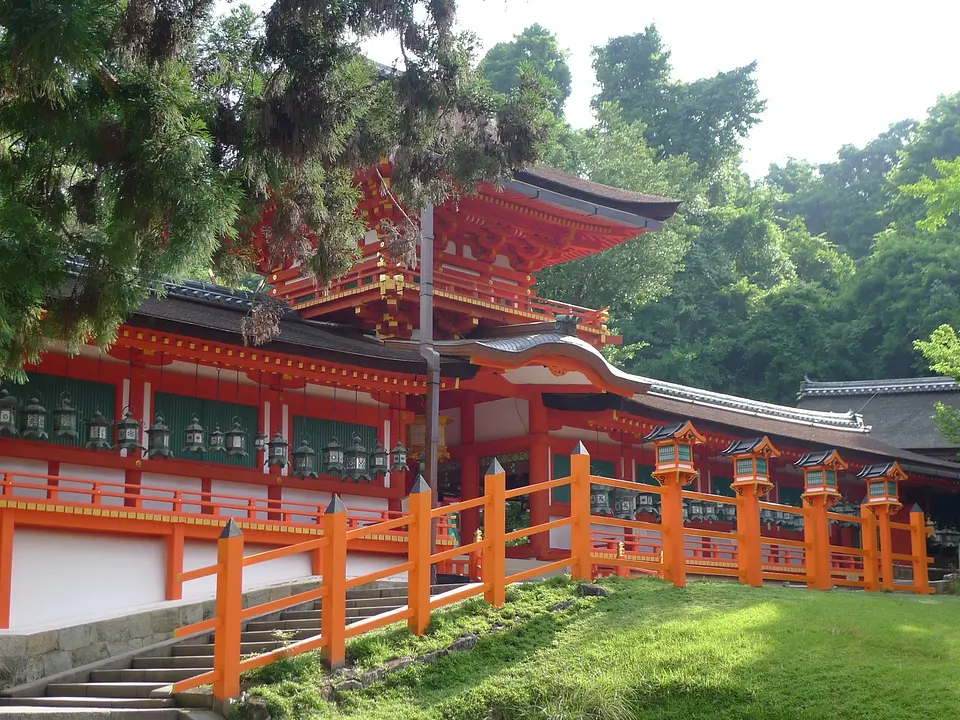
Kasugataisha Shrine
The Shrine lies in a primeval forest of cedars and a kind of Chinese black pines. The brilliant vermillon edifices are beautifully contrasted with their surrounding greenery. Going through the first and second Torii gates, you can see a lot of stone lanterns standing on both sides of the approach to the shrine. Going on further, you will find the south gate on the left. The main hall is located among trees behind the gate. From the gate a corridor extends to the left and to the right. A great number of lanterns hung from the eaves of the corridor are producing an elegant atmosphere. In the 3rd year of the Wado era (710), when the capital was transferred to Nara, Fujiwara-no-Fuhito celebrated a mass for tutelary deities of the Fujiwara family, which is considered to be the origin of this shrine. In the 2nd year of the Jingo-Keiun era (768), shrine buildings started to be constructed here. Just like the Kofuku-ji Temple,shrine buildings were added, along with the prosperity of the Fujiwara family. In the first half of the Heian period (794-1192), shrine buildings were completed on the same scale as they are today. After the Middle Ages, the belief was prevalent among commoners, which is shown by the fact that various-shaped hanging lanterns and stone lanterns known as "Mantoro" were mostly the donations from common people. The tutelary deities enshrined here are Takemikazuchi-no-Mikoto from Kashima of Ibaraki Prefecture, Futsunushi-no-Mikoto from Katori of Chiba Prefecture, Amenokoyane-no-Mikoto and Himegami from Hiraoka of Osaka Prefecture. (10 minutes' walk from the bus stop Kasuga Taisha Omote Sando of Loop Line Bus of the city)
Tamukeyama Hachimangu Shrine
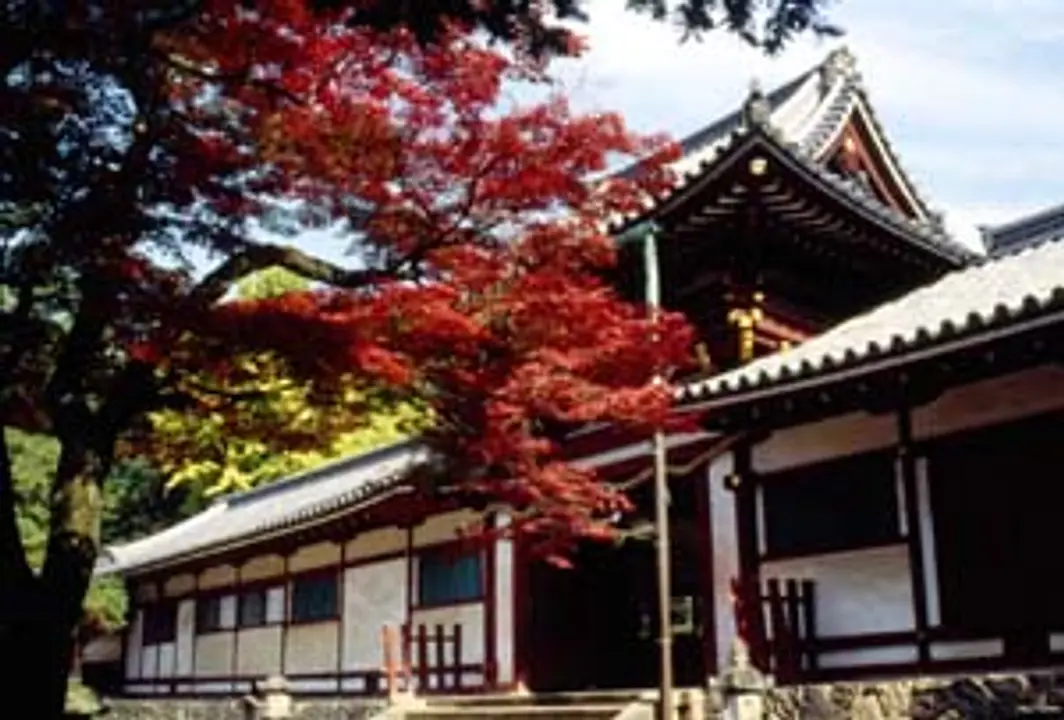
Tamukeyama Hachimangu Shrine
It was constructed in 794, around the time when the Great Buddha was built, in order to protect Todaiji Temple. It is also famous for its beautiful autumn leaves, and Sugawara-no Michizane wrote a waka poem, which says "I feel very sorry that I could not even prepare nusa(gift) to offer to the gods for this trip. Instead, I will use these beautiful colored autumn leaves as offerings." The treasure house in azekura-zukuri style(Important Cultural Property) was relocated from Todaiji Temple.
Todaiji Temple - Great Buddha Hall
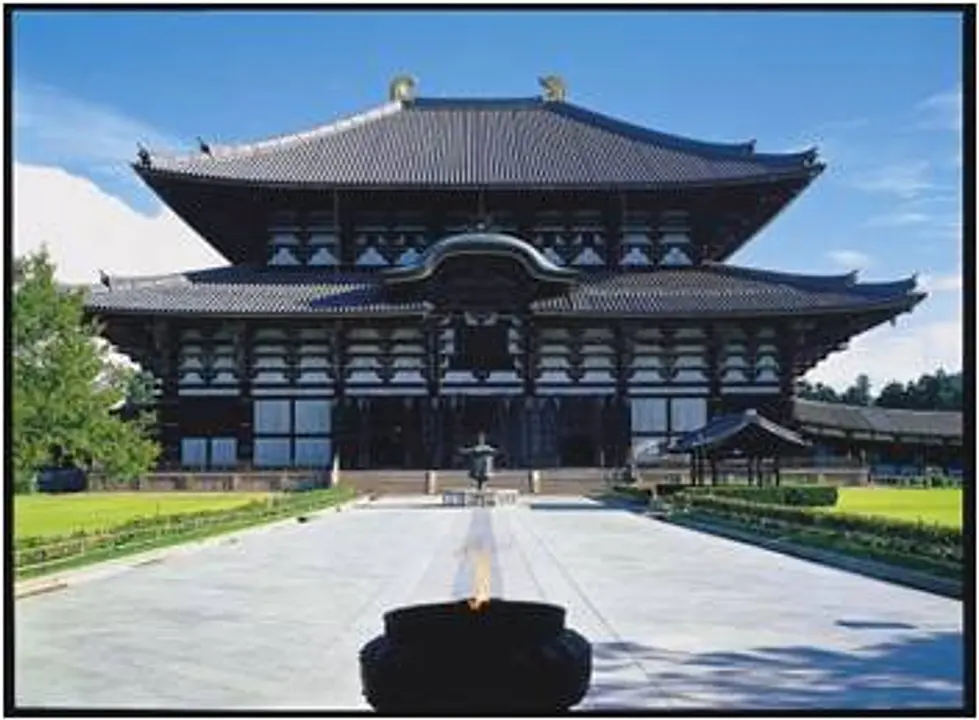
Todaiji Temple - Great Buddha Hall
Since its foundation in the 8th century, it has been destroyed by fire twice, and then rebuilt in the 13th century and the 18th century. In the 18th century, a sufficient supply of materials to construct the pillars could not be secured, and other materials were used to enclose the center of the pillars and iron rivets and hoops were used to fasten pillars. Also, the frontage was originally 86 meters wide when it was built, but it was reconstructed at 57 meters. It is still one of the biggest wooden structures in the world, and one can imagine its grandeur in the days of old.